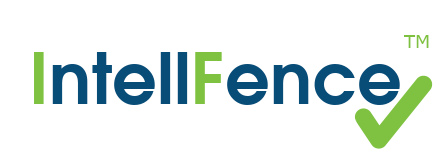
by intellfenceWP | Jul 27, 2021 | Security Management, Security Management
Intellfence Security Training
List of our available Intellfence Specialist security training programs.
[dvmd_table_maker tbl_row_header_count=”0″ tbl_stripes_active=”on” tbl_stripes_hue=”64deg” tbl_stripes_saturation=”128%” tbl_stripes_brightness=”86%” tbl_chead_cell_color=”#0c71c3″ tbl_rhead_cell_color=”#0c71c3″ tbl_rhead_cell_align_horz=”center” tbl_rhead_cell_align_vert=”center” _builder_version=”4.9.7″ _module_preset=”default” tbl_tcell_text_font=”||||||||” tbl_chead_text_font=”|600|||||||” tbl_chead_text_text_color=”#ffffff” tbl_chead_text_line_height=”1.1em” tbl_rhead_text_text_color=”#0c71c3″ hover_enabled=”0″ border_width_all_tbl_rhead_cell_border=”0px” sticky_enabled=”0″][dvmd_table_maker_item col_content=”Specialist Training
The First 90 Days of CISO and Beyond
Data Loss Prevention (DLP)
Zero Trust Security (ZTS)
Threat Modeling In Software Development Life Cycle (SDLC)
Preparing, Detecting and Responding to Ransomware Attack
Advanced Security: Stop Phishing & Ransomware Attack
Understanding Cybersecurity Using the OSI Model” _builder_version=”4.9.7″ _module_preset=”default” hover_enabled=”0″ sticky_enabled=”0″][/dvmd_table_maker_item][/dvmd_table_maker][dvmd_table_maker tbl_row_header_count=”0″ tbl_stripes_active=”on” tbl_stripes_hue=”64deg” tbl_stripes_saturation=”128%” tbl_stripes_brightness=”86%” tbl_chead_cell_color=”#0c71c3″ tbl_rhead_cell_color=”#0c71c3″ tbl_rhead_cell_align_horz=”center” tbl_rhead_cell_align_vert=”center” _builder_version=”4.9.7″ _module_preset=”default” tbl_tcell_text_font=”||||||||” tbl_chead_text_font=”|600|||||||” tbl_chead_text_text_color=”#ffffff” tbl_chead_text_line_height=”1.1em” tbl_rhead_text_text_color=”#0c71c3″ border_width_all_tbl_rhead_cell_border=”0px”][dvmd_table_maker_item col_label=”Compliance” col_content=”Compliance
SEC104 Developing Software For GDPR Compliance” _builder_version=”4.9.7″ _module_preset=”default”][/dvmd_table_maker_item][/dvmd_table_maker][dvmd_table_maker tbl_row_header_count=”0″ tbl_stripes_active=”on” tbl_stripes_hue=”64deg” tbl_stripes_saturation=”128%” tbl_stripes_brightness=”86%” tbl_chead_cell_color=”#0c71c3″ tbl_rhead_cell_color=”#0c71c3″ tbl_rhead_cell_align_horz=”center” tbl_rhead_cell_align_vert=”center” _builder_version=”4.9.7″ _module_preset=”default” tbl_tcell_text_font=”||||||||” tbl_chead_text_font=”|600|||||||” tbl_chead_text_text_color=”#ffffff” tbl_chead_text_line_height=”1.1em” tbl_rhead_text_text_color=”#0c71c3″ border_width_all_tbl_rhead_cell_border=”0px”][dvmd_table_maker_item col_label=”Security Training For Users & Awareness ” col_content=”Security Training For Users & Awareness
How to Design and Build Effective Cybersecurity Training and Awareness Program” _builder_version=”4.9.7″ _module_preset=”default”][/dvmd_table_maker_item][/dvmd_table_maker]
[dpevent_grid dem_grid_select_style=”style3″ dem_grid_display_number_of_event=”8″ dem_orderby=”event_start_asc” dem_link_type=”customlink” dem_show_event=”show_upcomming_events” dem_pagination_color=”#ffffff” dem_pagination_bg_color=”#0c71c3″ dem_pagination_active_color=”#0c71c3″ _builder_version=”4.7.4″ _module_preset=”default” header_font=”|700|||||||” header_text_color=”#0c71c3″ header_line_height=”1.4em” dem_date_fonts_text_color=”#ffffff” dem_date_fonts_font_size=”16px” dem_description_name_fonts_font_size=”16px” dem_description_name_fonts_letter_spacing=”1px” background_color=”#00457a” custom_padding=”0px||||false|false” box_shadow_style=”preset1″ box_shadow_horizontal=”1px”][/dpevent_grid]
Information Security Mastering Program
Certification subjects covered
- ISC2 Certified Information Systems Security Professional (CISSP)
- ISACA Certified Information Security Management (CISM)
- EC Council Certified Chief Information Security Officer (CCISO)
- ISACA Certified in Risk and Information Security Control (CRISC)

by intellfenceWP | Feb 1, 2021 | Our Programs, Security Management
Job placement And mentoring program
We train and bring security professionals together with a potential employer.
Why A Cybersecurity Job Placement & Mentoring Program?
As the cybersecurity industry evolves, so does the demand for more cybersecurity specialists. Individuals and organizations are experiencing competency issues as a result of the rising demand. How do potential candidates develop and demonstrate their skills?
How can businesses find and develop employees with the necessary skills? This is complicated further by the wide range of cybersecurity work fields. It might be difficult for many people to identify their specialty in this business.
Our job placement and mentorship program connects potential companies with cybersecurity specialists.
Employees’ Interest
We assist individuals in establishing a career in cybersecurity by offering hands-on training and mentorship. In many respects, cybersecurity is similar to other industries like engineering or healthcare. There are several pathways to specialization and numerous directions to pursue. To acquire a job and further your career in cybersecurity, you must first decide which of the several paths appeals to you.
Employers’ Perspective
We assist businesses in determining the type and degree of cybersecurity specialists required, as well as in training people to fill these jobs. We continue to give these professionals the skills they need to transform their knowledge into talents through continuing professional education.
Young School Graduates
Young individuals who have recently graduated from high school may find themselves unqualified to work in the cybersecurity sector due to a lack of experience and a failure to get the necessary academic credentials. The job placement and mentorship program assists these individuals in improving their skills.
People Looking To Switch Career
Cybersecurity, cloud computing, artificial intelligence, and big data are the future. Many individuals working in information technology now, such as system administrators, help desk agents, and database administrators, may be out of work in the future owing to the complexity of AI systems that might replace them. As a result, there is a need for individuals to switch to Cybersecurity, which spans many sectors.
Experienced IT Specialist
If you’ve been in the information technology sector for a while and now feel the urge to advance into Information Security Management for job functions such as a CISO or CSO but are having trouble financing it, this is the program for you.
How Does The Program Works?
We invite interested individuals to a one-on-one session so that we can assist them in determining the best path to follow depending on their job experience and the type of career they want to pursue. We utilize The National Initiative for Cybersecurity Education Cybersecurity Workforce Framework (NICE Framework) to assist students plan out their career path during this consultation. Based on this, a training curriculum is developed that will take the individual from zero to security professional in a short time.
The US national Institute of Standard and Technology (NIST) The NICE Framework was created to assist both companies and potential workers in focusing on the knowledge and skills required in the Cybersecurity industry. Using the NICE framework, we can assist in training and mentoring people to become cybersecurity professionals in their chosen field. The NICE framework categorizes the cybersecurity workforce into the following specializations:
The NICE framework enables an organization to successful recruit and train security professionals for multiple roles in the organization. Provides information about workforce needs for a giving function.
The NICE Framework presents clear information about cybersecurity work to help people looking for a new job or to change job roles, and workers looking to demonstrate or increase their competencies.
The NICE framework provides information about what a candidate needs to know to be efficient in the Cybersecurity industry. Educators can develop better educational programs. Certificates.
Components of the NICE Framework
Securely Provision
Concerned with conceptualizing, designing, and building secure IT systems, with responsibility for some aspect of the systems’ development.
- Risk Management
- Software Development
- System Architecture
- System Development
- Systems Requirements Planning
- Technology R&D
- Test and Evaluation
Oversee and Govern
Provides leadership, management, direction, or development and advocacy so the organization may effectively conduct cybersecurity work.
- Cybersecurity Management
- Executive Cyber Leadership
- Legal Advice and Advocacy
- Program /Project Management and Acquisition
- Strategic Planning and Policy
- Training, Education and Awareness
Operate and Maintain
Responsible for providing the support, administration, and maintenance necessary to ensure effective and efficient IT system performance and security.
- Customer Service and Technical Support
- Data Administration
- Knowledge Management
- Network Service
- Systems Administration
- System Analysis
Analyze
Specialty areas responsible for highly specialized review and evaluation of incoming cybersecurity information to determine its usefulness for intelligence.
- All Source Analysis
- Exploitation Analysis
- Language Analysis
- Targets
- Threat Analysis
Protect And Defend
Identification, analysis, and mitigation of threats to internal IT systems or networks. Uses defensive measures and information collected from a variety of sources to identify, analyse, and report events that occur or might occur within the network to protect information, information systems, and networks from threats.
- Cyber Defence Analysis
- Cyber Defence Infrastructure Support
- Incident Response
- Vulnerability Assessment and Management
Collect And Operate
Responsible for specialized denial and deception operations and collection of cybersecurity information that may be used to develop intelligence.
- Collection Operation
- Cyber Operational Planning
- Cyber Operations
Investigate
Responsible for detecting and analyzing cyber events and/or crimes of IT systems, networks, and digital evidence.
- Cyber Investigation
- Digital Forensics

by intellfenceWP | Jan 30, 2021 | Security Management
Intellfence Security Training
List of our available Specialist security training programs.
The session contains information about the Cyber Security Workshops.
The session contains information about the 2-day short courses
The session contains information about the Cyber Security Mastery Classes

by intellfenceWP | Jan 28, 2021 | Security Management
Certified Information Security Management (CISM) Exam Prep
All training runs from 9:00 to 16:30 every day and conducted in English language unless explicitly stated.
About the Certified Information Security Management CISM Exam Training Course
The Certified Information Security Management (CISM) Exam preparation training is a refresher course designed for you to help you pass the CISM exam if you are having some difficulties with it. You will need this course if:
1. You have undergone the CISM training a while back and feel you need some refresher course to pass the exam?
2. You went through a Self study program and would like an instructor to help with the finishing touches to prepare for the exam.
3. Furthermore, you have taken the exam before and have not been unsuccessful, and you are having challenges in understanding the English language questions.
If any of the above applies to you this two-day program will help you to prepare for the exam with the support from an experience instructor.
Key Features of this CISM Exam Training:
- Earn CISM certification.
- Review over 170 questions with the instructor with explanation and examples.
- Access to hundreds of additional exam prep questions
- After training communicating with the instructor via our social learning portal.
You Will Learn How To:
- Strategically focus your preparation for CISM Certification.
- Understand your area of weakness and how to zoom in those areas and optimized your result.
- Properly review the questions and eliminate bogus options to get the correct answer.
The Online Classroom includes:
- Access to recordings and course content for 360 days.
- Interactive flash cards to reinforce learning.
- Independent reading and learning activities.
Domain 1 - Information Security Governance
- Effective Information Security Governance
- Key Information Security Concepts and Issues
- The IS Manager
- Scope and Charter of Information Security Governance
- IS Governance Metrics
- Developing an IS Strategy – Common Pitfalls
- IS Strategy Objectives
- Determining Current State of Security
- Strategy Resources
- Strategy Constraints
- Action Plan Immediate Goals
- Action Plan Intermediate Goals
Domain 2 - Information Risk Management
- Effective Information Security Risk Management
- Integration into Life Cycle Processes
- Implementing Risk Management
- Risk Identification and Analysis Methods
- Mitigation Strategies and Prioritisation
- Reporting Changes to Management
Domain 3 - Information Security Program Development and Management
- Planning
- Security Baselines
- Business Processes
- Infrastructure
- Malicious Code (Malware)
- Life Cycles
- Impact on End Users
- Accountability
- Security Metrics
- Managing Internal and External Resources
Domain 4 - Information Security Incident Management
- Implementing Effective Information Security Management
- Security Controls and Policies
- Standards and Procedures
- Trading Partners and Service Providers
- Security Metrics and Monitoring
- The Change Management Process
- Vulnerability Assessments
- Due Diligence
- Resolution of Non-Compliance Issues
- Culture, Behavior and Security Awareness
Our Guarantee:
If you didn’t pass this exam at your first try after the refresher course then you will be free to participate free of charge in our next refresher program.
by intellfenceWP | Dec 4, 2020 | Security Management
SEC 126 Developing Software For GDPR Compliance
About The Developing Software For GDPR Compliance Course
GDPR for developers is a training program that will helps software developers and system engineers to implement GDPR compliance into their software development Lifecyle. When creating software, data protection and privacy by default should be part of the software development Lifecyle. This training is intended to provide software developers an overview of GDPR from the software and database development perspective.
Key Features of the Training:
Every developer is also expected to understand and implement the following GDPR concepts:
- Conduct a Data Flow Mapping.
- Data classification.
- How to apply the 7 Principles of Privacy by Design.
- Managing code repo and deployment practices.
- Secure your data at rest and in transit.
- Ensure that you have appropriate access controls for Personal Information.
- Enforcement of the organization Data Retention Policy.
- Anonymize and Pseudonymise data.
- Review third third-party processors.
- Review how employees access and process personal information using BYOD.
- Ensure your data hosting arrangements meets to GDPR compliance level.
- Understand automated decision-making and profiling.
- Understand and assess the basis of processing personal information.
GDPR Data protection Principles
Data protection by design
- The use of pseudonymisation (replacing personally identifiable material with artificial identifiers).
- Encryption (encoding messages so only those authorised can read them).
Data protection by default
- Ensure user profile settings is in the most privacy-friendly setting.
- How to assure the users’ profile isn’t accessible by default to an indefinite number of persons.
Data loss Protection
Detects potential data breaches/data loss and prevents them by monitoring, detecting and blocking sensitive data while in-use, in-motion, and at-rest.
Choosing the right authentication scheme.
- What should I consider when implementing a password system?
- How should we store passwords?
- How should our users enter their passwords?
- What requirements should be set for user passwords?
- What should we do about password expirations and resets?
- What defenses can be put in place against attacks?
Building encryption into your application
- Encryption and data storage
- Encryption and data transfer
- What types of encryption are there?
- How should we implement encryption?
Ensure data integrity and confidentiality
Authentication scheme for GDPR compliance
To comply with GDPR the organization must comply with the security principles of ‘integrity and confidentiality’ The security principle requires you to take appropriate technical and organizational measures to prevent unauthorized processing of personal data you hold. To uphold these tenants’ security have to be build into your technological design.
Building the GDPR User Rights into systems
- Consent – A clear and affirmative action from users is required to possess and process their personal data.
- Right to Access – An individual has the right to know what personal data you have and what you are doing with it.
- Right to Erasure – An individual has the right to require the deletion of their personal data if the continued processing is not justified.
- Data Portability – Individuals have the right to require companies transmit their personal data to another company.
- Breach Notification – Individuals must be notified with 72 hours of a data breach involving their personal data.
- Privacy by Design – Data protection must be incorporated into the design of systems from the beginning, not just added later. And companies can only hold and process the data absolutely necessary to complete its duties (data minimalization) and limit the access to that data.
Implementing Right to Limited Processing
- Restriction of Processing:Users have the right to “restrict” processing, which means their data cannot be used or leveraged further without the user’s explicit consent.
- Erasure:All users must have the option to be forgotten or deleted from the system.
Data Portability: All collected data and information must be portable so users can export contents and view or read it in a proper format.
- Rectification:The option or ability to fix personal data that is inaccurate or incomplete.
- View Data:Every user has the right to be informed about data collection and use, including information outside of standard terms and conditions.
- Access:Any data collected, processed, or stored should be visible to the relevant user at all times.
Target Audience
This training course is intended for professionals who are involved in any form with software development and needs to design software to meet the GDPR requirements. The training is ideal for those working in positions such as, but not limited to:
- System Developers
- Software developers
- Database developers
- Web Developers
- Data Engineers
|
|
by intellfenceWP | Dec 3, 2020 | Cloud Security, Security Management
About the CCSP Course
Certified Cloud Security Professional (CCSP) is one of the industry’s premier cloud security certifications offered for individuals and enterprise teams to manage cloud assets securely. This 4-day Certified Cloud Security Professional (CCSP) certification is governed by the not-for-profit International Information Systems Security Certification Consortium (ISC)2. Check out the dates below and enroll today for the CCSP certification course.
Key Features of this CISSP Training:
- Instructor-led Certified Cloud Security Professional (CCSP) Certification Training
- Get access to a free course preview to begin your preparation
- Expert CCSP instructors across the globe
- Accredited CCSP course material prepared by SMEs
- Get key resources from ISC2
- CCSP Sample papers provided
- Industry-recognized Course Completion certificate provided
- Take advantage of 1-to-1 Training and Fly me a Trainer option
- Training provided across 100+ locations globally
You Will Learn How To:
- Strategically focus your preparation for CCSP Certification
- Plan a secure environment aligned with organizational objectives, compliance requirements, and industry-standard architectures
- Develop operational security and continuity through preventive and recovery mechanisms
Domain 1: Architectural Concepts & Design Requirements
Cloud computing concepts & definitions based on the ISO/IEC 17788 standard; security concepts and principles relevant to secure cloud computing.
- Understand Cloud Computing Concepts
- Describe Cloud Reference Architecture
- Understand Security Concepts Relevant to Cloud Computing
- Understand Design Principles of Secure Cloud Computing
- Identify Trusted Cloud Service
Domain 2: Cloud Data Security
- Concepts, principles, structures, and standards used to design, implement,monitor, and secure, operating systems, equipment, networks, applications, and those controls used to enforce various levels of confidentiality, integrity, and availability in cloud environments.
- Understand Cloud Data Lifecycle
- Design and Implement Cloud Data Storage Architectures
- Design and Apply Data Security Strategies
- Understand and Implement Data Discovery and Classification Technologies
- Design and Implement Relevant Jurisdictional Data Protections for Personally Identifiable Information (PII)
- Design and Implement Data Rights Management
- Plan and Implement Data Retention, Deletion, and Archiving Policies
- Design and Implement Auditability, Traceability and Accountability of Data Eve
Domain 3: Cloud Platform & Infrastructure Security
Knowledge of the cloud infrastructure components,both the physical and virtual, existing threats, and mitigating and developing plans to deal with those threats.
- Comprehend Cloud Infrastructure Components
- Analyze Risks Associated to Cloud Infrastructure
- Design and Plan Security Controls
- Plan Disaster Recovery and Business Continuity Managemen
Domain 4: Cloud Application Security
Processes involved with cloud software assurance and validation; and these of verified secure software.
- Recognize the need for Training and Awareness in Application Security
- Understand Cloud Software Assurance and Validation
- Use Verified Secure Software
- Comprehend the Software Development Life–Cycle (SDLC) Process
- Apply the Secure Software Development Life–Cycle
- Comprehend the Specifics of Cloud Application Architecture
- Design Appropriate Identity and Access Management (IAM) Solutio
Domain 5: Operations
Identifying critical information and the execution of selected measures that eliminate or reduce adversary exploitation of it; requirements of cloud architecture to running and managing that infrastructure; definition of controls over hardware, media, and the operators with access privileges as well as the auditing and monitoring are the mechanisms, tools and facilities.
- Support the Planning Process for the Data Center Design
- Implement and Build Physical Infrastructure for Cloud Environment
- Run Physical Infrastructure for Cloud Environment
- Manage Physical Infrastructure for Cloud Environment
- Build Logical Infrastructure for Cloud Environment
- Run Logical Infrastructure for Cloud Environment
- Manage Logical Infrastructure for Cloud Environment
- Ensure Compliance with Regulations and Controls (e.g., ITIL, ISO/IEC 20000–1)
- Conduct Risk Assessment to Logical and Physical Infrastructure
- Understand the Collection, Acquisition and Preservation of Digital Evidence
- Manage Communication with Relevant Parties
Domain 6: Legal & Compliance
Addresses ethical behavior and compliance with regulatory frameworks. Includes investigative measures and techniques, gathering evidence (e.g., Legal Controls, eDiscovery, and Forensics); privacy issues and audit process and methodologies; implications of cloud environments in relation to enterprise risk management.
- Understand Legal Requirements and Unique Risks within the Cloud Environment
- Understand Privacy Issues, Including Jurisdictional Variation
- Understand Audit Process, Methodologies, and Required Adaption’s for a Cloud Environment
- Understand Implications of Cloud to Enterprise Risk Management
- Understand Outsourcing and Cloud Contract Design
- Execute Vendor Management
The Online Classroom includes:
- Access to recordings and course content for 360 days.
- Interactive flash cards to reinforce learning
- Independent reading and learning activities
- Case studies and real-world scenarios
- Knowledge checks after each domain
- Post-course assessment questions to gauge exam readiness
Target Audience
This training course is intended for professionals who have at least 2 years of recent full-time professional work experience in 2 or more of the 8 domains of the CISSP CBK and are pursuing CISSP training and certification to acquire the credibility and mobility to advance within their current information security careers. The training is ideal for those working in positions such as, but not limited to:
- Security Consultant
- Security Manager
- IT Director/Manager
- Security Auditor
- Security Architect
|
- Security Analyst
- Security Systems Engineer
- Chief Information Security Officer
- Director of Security
- Network Architect
|












